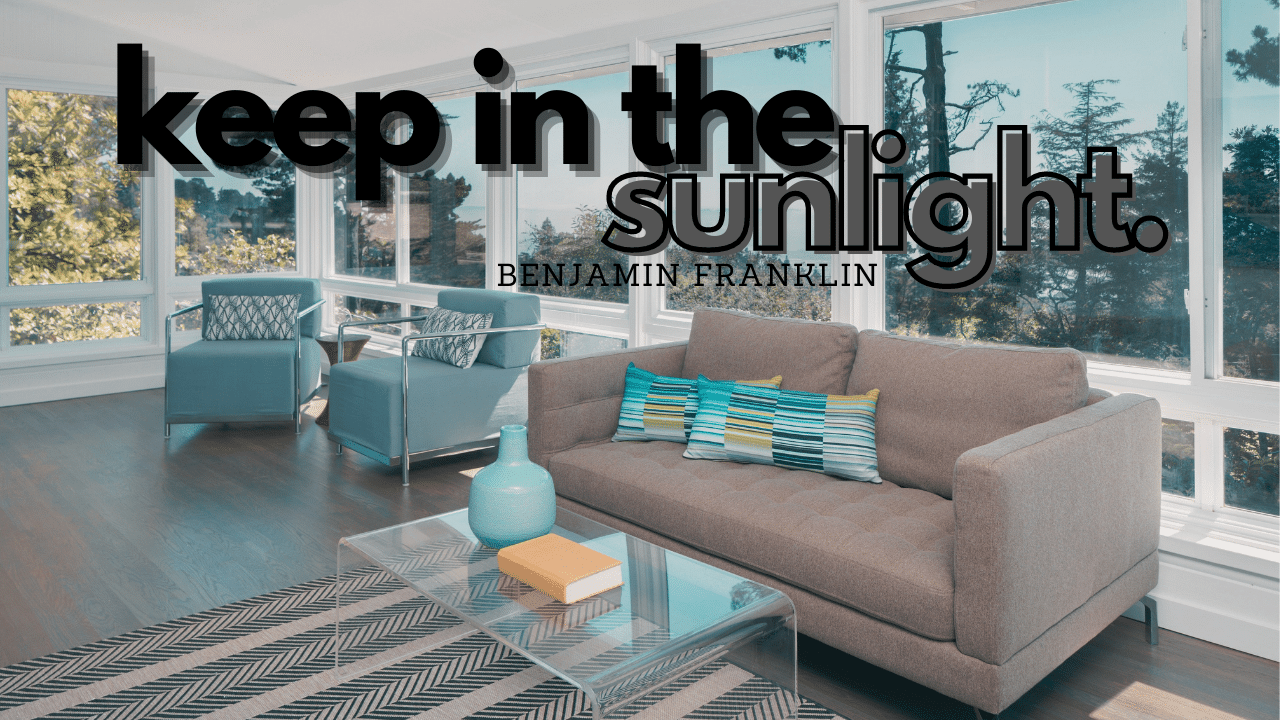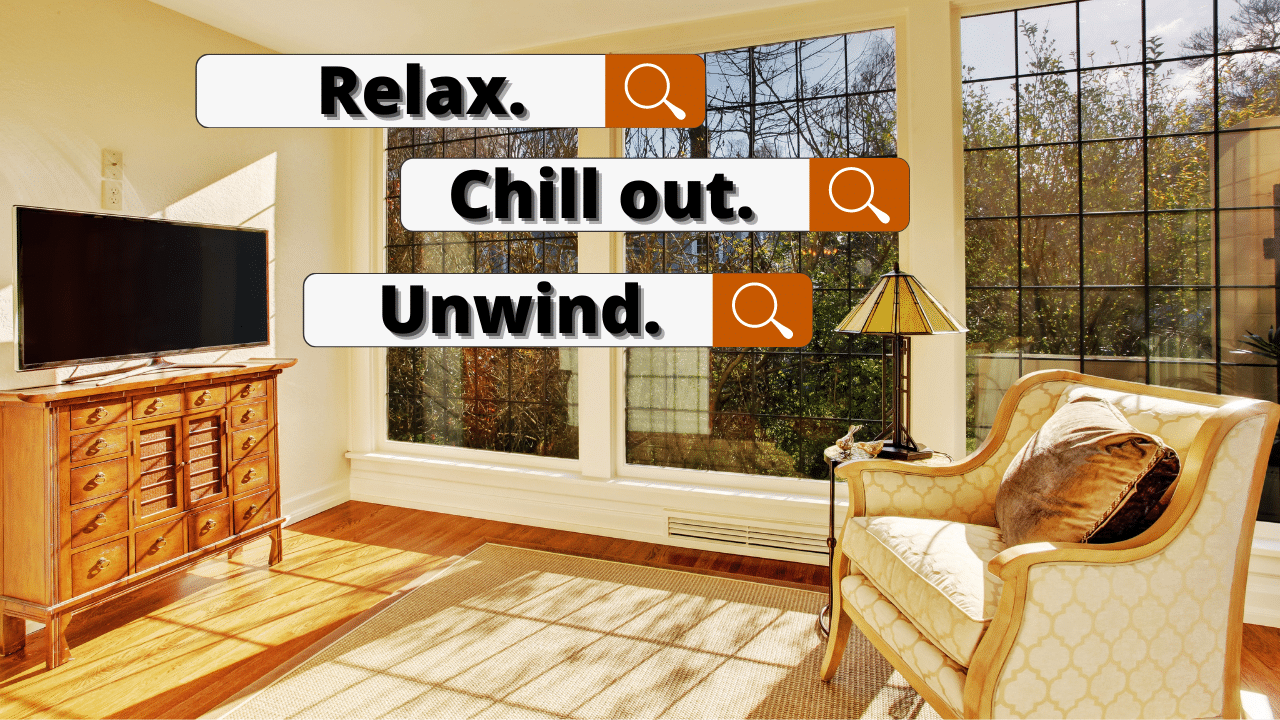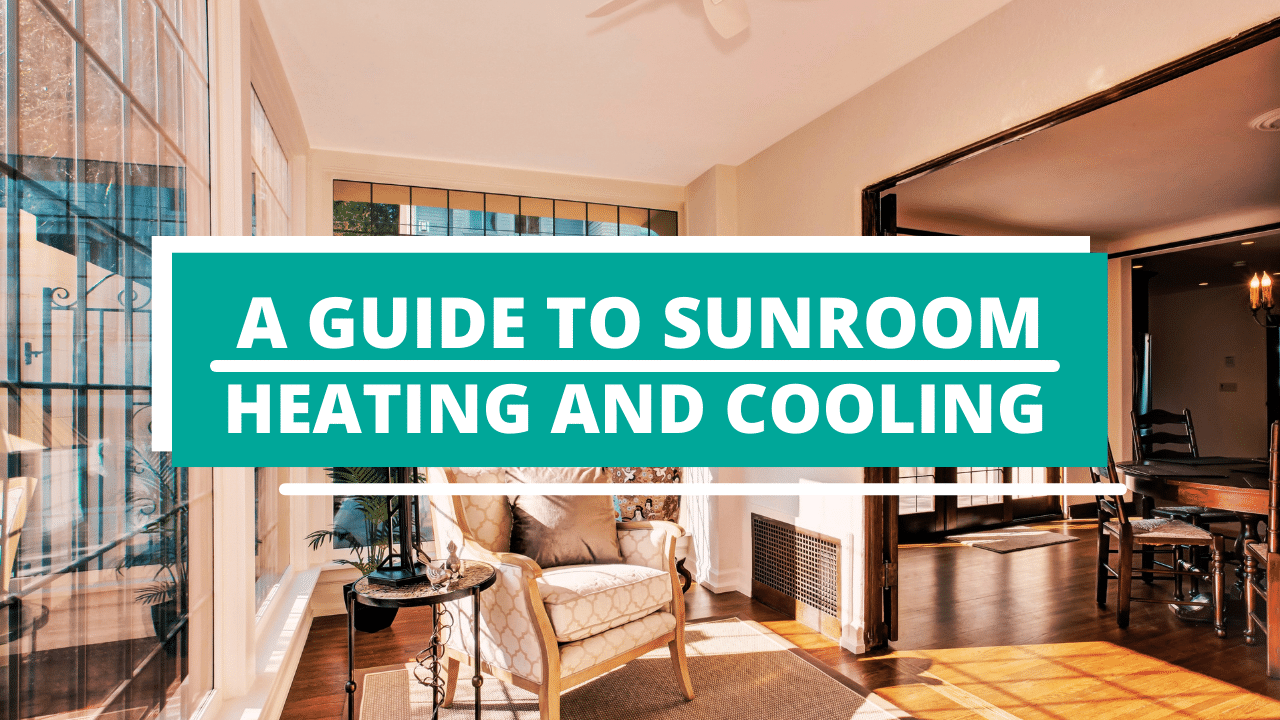Sunrooms can be a great way to bring light into your home and make a warm and comfortable space to be enjoyed when the weather is less than ideal. A sunroom can also be a great place to enjoy summer days out of the direct heat and humidity.
There are many parts of the US where these rooms are commonly found in homes and they are often a required option for homebuyers looking for their next new home.
If you have been struggling with your sunroom being too hot or too cold, however, you might not be using it enough to justify having paid for it to be built. This can be a very frustrating situation for those who built this new room onto their home thinking that it would regulate its own temperature without much intervention.
Thankfully, there are some great ways to make sure that your sunroom is heated and cooled correctly for year-round enjoyment.
What does Sunroom Heating and Cooling Cost?
The answer to this question can vary. There are a variety of ways that you can choose to heat and cool your sunroom, and the most affordable will be to add vents that tie the room to your central heat and AC systems. This can add to some increased costs over the course of the year, but in most cases, it is the most efficient system.
You can elect for some options that are not as affordable, like the use of a space heater in the winter, but this can lead to a much higher power bill for your home. Space heaters are also a fire hazard, so it is never recommended for this to be your long-term solution for this space.
Ductless mini units are not very expensive and you can add these units to the wall in your sunroom and then have an easy adjustment made to your home to link the unit to AC and heat. (Related: Sunroom Addition Cost & Consumer Guide) This can be a great solution that will only cost around $2,500 and can be a big saving when compared to other solutions that might cost many thousands of dollars.
Window A/C units can be a great solution as well, but they are not particularly attractive and can be noisy. These units will increase your electrical bill but not as significantly as a space heater might. This is usually a temporary fix, but it might work out if you only need some cooling in the room for a few months a year.
Attaching your sunroom to the rest of your central air system with vent extensions can be a good solution in some cases, particularly if your sunroom is not very big and is not located too far from the center of your home.
You can run into some issues with poor thermostat control of the sunroom area in your home as well as increased bills if your sunroom is not properly insulated and does not have double-paned windows.
Pros to Sunroom Heating and Cooling
Heating and cooling your sunroom can make the room much more useful to you year-round and it can also protect your home from mold and mildew buildup or damage from cold and snow if you get harsh winters.
Heating or cooling any room in your home protects that room’s interior surfaces from damage. You would be shocked at how much damage hot and cold can do to wall paneling, flooring, and other items in the room.
There are more pros than cons to making sure to heat and cool your sunroom, and most people find that they are glad that they committed the funds to the project as soon as they are done with the process of adding heating and cooling to this room.
It can be really frustrating to have a sunroom that you cannot use year-round and you will be really disappointed if your furniture and other décor in the room are ruined by moisture or heat during the parts of the year that you are not using the room on a regular basis.
Cons to Sunroom Heating and Cooling
The biggest con is the cost of most of these solutions. However, these are one-time costs. Once your heating and cooling solution is in place, you will likely not have too many other costs related to its upkeep. There will always be annual costs for care of any heating or cooling system, but these are usually minimal overall.
If you have an older heating or cooling system in place in your home, you might find that the cost of adding A/C or heat to your sunroom can be much more expensive than you were thinking.
However, ductless mini splits are often the easiest solution in these cases and are not nearly as expensive as modifying the rest of your heating and cooling system in your home.
When adding your sunroom to your heating and cooling system through vent extension, you will need to be sure that you are going to be able to heat and cool your sunroom adequately. You will find that poorly insulated rooms, as well as large rooms, will be hard to heat or cool efficiently using this method.
You might see a big increase in your overall heating and cooling costs through the use of this kind of solution. Vent extensions can be a great low-cost solution for your needs, but it does come with some potential detractions.
You should always consider just how much you are not able to use your sunroom during the year and balance this information against the cost to make sure that you can use it whenever you want.
There can be additional costs for repairs and upkeep on sunrooms that have been exposed to extreme temperatures as well that might figure into this cost and benefit analysis.

Most Common Solutions for Sunroom Heating and Cooling
Central Air and Heat
One of the most common solutions for the need to heat and cool your sunroom is to connect the room to your central A/C and heating in your home. If you have a ductwork system in place already, you should be able to extend the ductwork to your sunroom.
You will be able to heat and cool your sunroom at the same time as the rest of your home with this system in place.
This can offer some downsides in that your sunroom might not be insulated as well as the rest of your home and your entire heating and A/C system might have to work harder to care for the needs of this room as well as the rest of your home.
The size of your existing HVAC system might be a factor in whether or not this solution will be the best one for your needs.
Your current unit might need to be supplemented with an additional unit to cover the needs of your sunroom. An HVAC specialist will be able to evaluate your current heating and air conditioning systems to see if you can add your HVAC system to the load that it can handle.
They can also look at your ductwork that is already in place and see if you can simply add the room to the system or if more work needs to be done with the ductwork and other installation processes.
Vent Extension
In this process supply and return vents are installed in the sunroom and connected to the existing central air that is installed in your home. This can be a very easy process with some pre-established systems and it can take care of your needs in the sunroom quite easily.
There may be limitations to how well this will manage your cooling and heating needs in this kind of space, however.
Limitations for the effectiveness of this solution are the size of your A/C or furnace and the length of the ducts that are needed to connect it. You might find that your sunroom will be the last place to get both heat and cooling which can mean that it will always be too hot or too cold despite connecting the space to your central air system.
The other limitation for this kind of solution is that sometimes your sunroom will not have the proper insulation and windows to lock in the heat and the cold air that you have pushed into the room.
You should only use this process to heat or cool your sunroom if you are sure that it will hold onto the heat and the cold air that you have sent to it.
You can make your heating and cooling bills skyrocket by trying to heat and cool a room that is not going to hold temperature as well as the rest of your house.
Another consideration with this solution is that you might have issues with the thermostat in the central part of your home not being close enough to the sunroom to be able to provide accurate feedback for the needs of the sunroom.
The temperatures inside of a sunroom can vary widely due to the large amount of glass that makes up the walls of the room, so your thermostat might not be able to properly react to the needs of your sunroom compared to the rest of your home.
Ductless Mini Splits
This is often the best option for these kinds of needs and you will find that ductless minis are typically the perfect choice for most sunrooms for a whole host of reasons. They are usually very affordable to install if your central air system will not allow you to just connect your sunroom to it.
These little units are very effective at what they do and they can heat and cool a single room quite effectively.
These units can be wall or ceiling mounted and they are made with the ability to heat and cool quite efficiently. They are discreet as well and do not show off their presence in the room. You can sometimes even pick unique colors, although most units are white.
To add a ductless mini-split to your home you will need to have an outdoor compressor/condenser as well as an indoor unit. These are connected with a conduit and some power cabling. There will also be some refrigerant tubing and suction tubing and a condensate drain that connects to the outside of your sunroom.
These units are quite discreet from the outside as well. This makes them a great solution for your overall heating and cooling needs for your sunroom.
Portable Heating or A/C Units
There are a variety of ways that you can just add a portable unit to your sunroom that will heat or cool the room while it is in use. You can invest in portable units that sit on the floor to provide cooling or window-mounted A/C units.
Both options are viable but they will usually require more electricity than any other solution that you could employ.
The benefit of these portable A/C units is that you can select when you are going to use them and you can move them around as needed. It can be hard to install a window unit in most sunrooms due to the way that the glass is arranged in these rooms and the lack of window sills.
Floor units can also take up a lot of space that you would probably rather use for sitting and enjoying the room.
Portable heaters can probably heat a sunroom quite readily but again will use a lot of electricity. You will also find that they are noisy and they tend to make the room very hot very quickly and are then unable to maintain the temperature readily.
Even portable heaters with thermostats are not going to be able to judge the temperature on the other side of the room with any accuracy. This can lead to a lot of wasted power as well as a room that is not very comfortable.
The last major detraction to portable heating units of all kinds is that they are a fire risk and they can cause major issues for the safety of your home.
This can be particularly true if you have children or pets in your home that might knock them over or cause them to contact flammable items. While these units have become safer over the years, they are still not foolproof.
Overhead Fan
While not a heating or cooling system per se, an overhead fan can also offer benefits that could cool your sunroom.
This can be a good way to circulate hot or cold air throughout the room if you have a heating or cooling solution in place that you want to be more efficient. This is most helpful when you are trying to heat or cool a very large sunroom.
You will not be able to use the fan itself for heat or cooling, but circulating the air will make it much easier to keep the temperature pleasant in your sunroom year-round.
You will probably save a lot of money on electricity as you use other heating and cooling methods when you have a fan to help move the air around the room.
In some parts of the country, a fan might actually take care of almost all of your cooling needs. This will likely not be nearly enough help in very hot places like Arizona, but it can be a benefit if you really only experience a few very hot days annually in your location.
Being able to move the air around can be enough to cool the room down at least a few degrees even in the summer.

Some Other Things to Consider
No matter what kind of sunroom you have, you should be sure to consider installing new glass in the windows. Single pane windows are not very efficient and can let out a lot of heat in the winter and let in a lot of heat in the summer. Having double-paned windows that are energy efficient can really help your sunroom be an enjoyable space all year.
You should also consider upgrading the space if the walls of your sunroom are not up to the current code. Having thick enough walls with the proper insulation can make a big difference in your heating and cooling costs.
You should think of your sunroom as an extension of your home and make sure that the sunroom is working to keep your home efficient at all times.
Sunroom Heating and Cooling can be Easy
This list should give you a great set of ideas to use to improve your sunroom’s heating and cooling systems. There are many ways to make your sunroom more comfortable for use all year and you can pick and choose from this list of options to find the right heating and cooling arrangement for your unique needs.
You will find that making an upgrade to your current system will likely add a lot of value to your home as well as making your sunroom one of your favorite rooms to spend time in!

